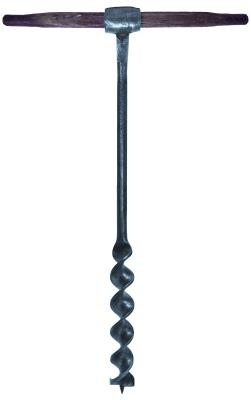STICK, LAUNDRY
c. 1902 - 1961Tapered wooden stick, largest diameter near the end which has waisted section leading to a knob as a hand grip.
Laundry or copper stick used by the Turner family in Beverly and possibly the Mills family in Armadale and later Beverly to clean their clothes in the early to mid 1900s. The stick was used to stir the clothes when they were being washed in the 'copper' or the large metal container that the water was placed into and heated. Most coppers were made from galvanised steel but the better quality ones were made from copper.
Lois's father, William Tidbury Mills came to Western Australia in the 1890s to try his luck on the recently discovered Goldfields. In c1905 William returned to South Australia and married Victoria Maria Mason. The newly married couple then returned to Western Australia and settled in Armadale where they started their family. Their first child, George Hartly was born in Armadale in 1906. Lois was delivered by local midwife Mrs Bodicoat in 1908 at the family property on the corner of Eleventh Avenue and Gull Street. Lois would have spent her first few years of schooling attending the Armadale State School. While in Armadale the family had four other children, Avon William in 1909, Hartly Mason in 1911, Sydney Eric in 1913 and Victor Glenn in 1914
In 1915 the Mills family moved to Brookton. That same year Hilda Victoria was born and in 1918 Fred Mason was born. The family lived on a farm which they called 'Masonville' to the east of the Brookton
In 1932 Lois married Sidney John Turner a local farmer and lived in the district for the next thirty years. In 1961 Sidney passed away and Lois moved back to Armadale. Lois would later join the Armadale Kelmscott Historical Society. In 1975 as the AKHS prepared to open History House Lois donated a large number of items from her family.
Lois passed away in Armadale in 1988.
Details
Details
Example of the technology used by residents in Kelsmcott, including the Turner family to wash cloths. Electricity arrived in Kelsmcott in 1924 but it was not untill after the 1950s that many urban homes in the district would have been conected to electricity, had water plumbed to the house and electrical appliances such as washing machines were available and affordable. Most people would have done their clothes washing by hand.


